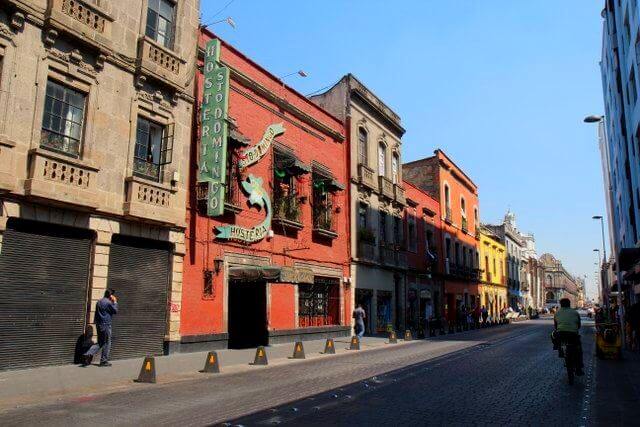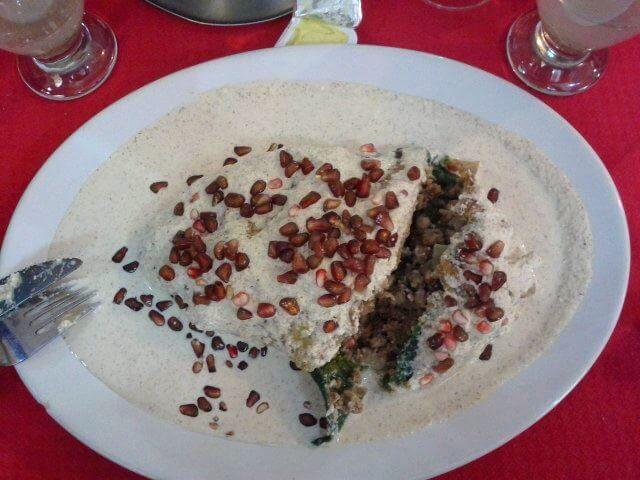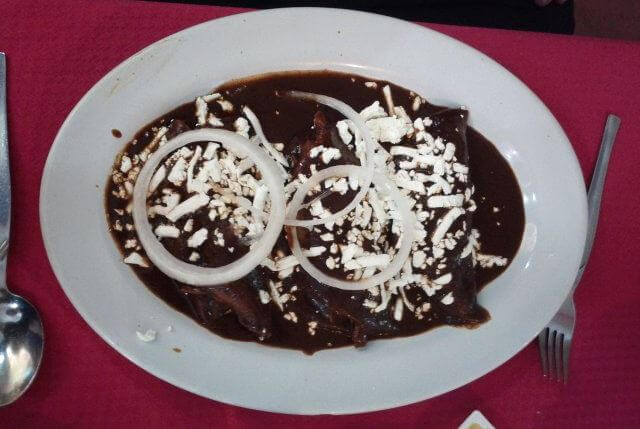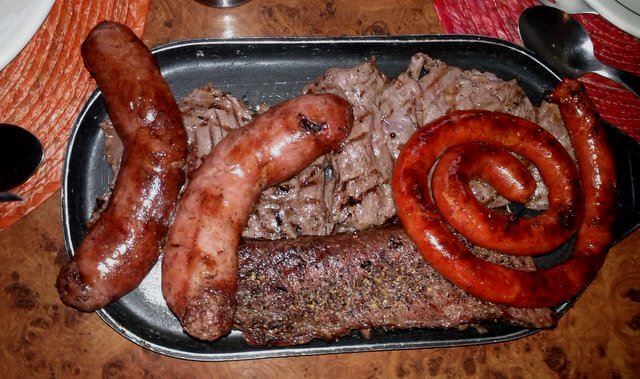
Hosteria Santa Domingo
Having just driven down through the West Coast of the US, and eaten our fair share of places offering supposedly ‘Authentic Mexican cooking’, I wanted our first meal in Mexico to be something authentic and truly Mexican.
We had Cuban sandwiches.
We arrived later than expected and it was the only restaurant nearby, still open that late at night.
For the second meal, I actually did some research and found a very traditional restaurant along our route towards the centre of town, so ideal for lunch.
Hosteria Santo Domingo
Hosteria Santo Domingo has a reputation for making some of the most authentic dishes in Mexico. Housed in the 16th century Santo Domingo Convent, the building was converted to a restaurant in 1860.
The inside was caverous, generously decorated with numerous paintings and photos. The all-male, all-elderly staff were dressed in dark suits with bow ties. The only other two diners were equally smartly attired. I was wearing very dusty shorts.
Despite our appearance, they let us in but seated us at the back, well away from the windows, possibly so no-one else could see our appearance. We ordered the classic mole poblano and their speciality: Chiles en Nogada.

Chiles en Nogada – first impression isn’t great
Chiles en Nogada
Chiles en Nogada is a green poblano chile, filled with a mixture of shredded meat, fruits and spices called picadillo. The whole dish is covered in a pale walnut-based cream sauce – the Spanish word for walnut tree (nogal) lends the dish the name nogada. The dish is garnished with scarlet pomegranate seeds to replicate the green, white and red of the Mexican flag.
Mexico gained independence from Spain in August of 1821, and nuns in Puebla created this dish using local ingredients in season at the time. Now the patriotic dish is popular for Mexican Independence Day, and very few restaurants serve it year round.
To be honest, I can see it’s a complicated and clever dish, but it’s not really to my tastes. The walnut sauce is delicious, and the slightly acidic pomegranate seeds lighten the creamy richness. The problem comes when the high ratio of fruit to meat in the stuffing leaves the whole dish tasting rather sweet.
It looks a lot of work, but I’m very tempted to try making it at home, with a bit less fruit. The Mija Chronicles has an excellent description of the restaurant preparation method.

Mole Poblano, sprinkled with Oaxaca cheese
Mole poblano
Another dish from the state of Pueblo is mole poblano. Considered by many as the national dish of Mexico, mole sauce contains chocolate, chili and up to twenty other spices.
Unlike some mole poblanos I’ve eaten outside Mexico, the chocolate here doesn’t dominate the dish. It just takes dulls any spiciness out of the heat of the chili sauce.

Not the best neighbourhood in Mexico City
Dinner
Chiles en Nogada at Hosteria Santo Domingo was M$195 (US$15), which is high by Mexican standards. The whole meal came to about 400 pesos, with salad and drinks. Portions are large, so allow time afterwards for a bit of a nap…
Much later that day, after walking all round Mexico City, we found a streetside parilla, or meat grill. Simple as anything, much cheaper and absolutely delicious, all served up in a far more convivial atmosphere.

Parilla in Mexico City – perfect with chimichurri sauce







Pingback: Steve Juba (@solotravelclubs)
Pingback: K Catchpole - E Mohl (@TransAmericas)
Pingback: @MexicoMoment
Thanks for the story. Dishes look delicious in your photos.
I would love to have parilla RIGHT NOW!